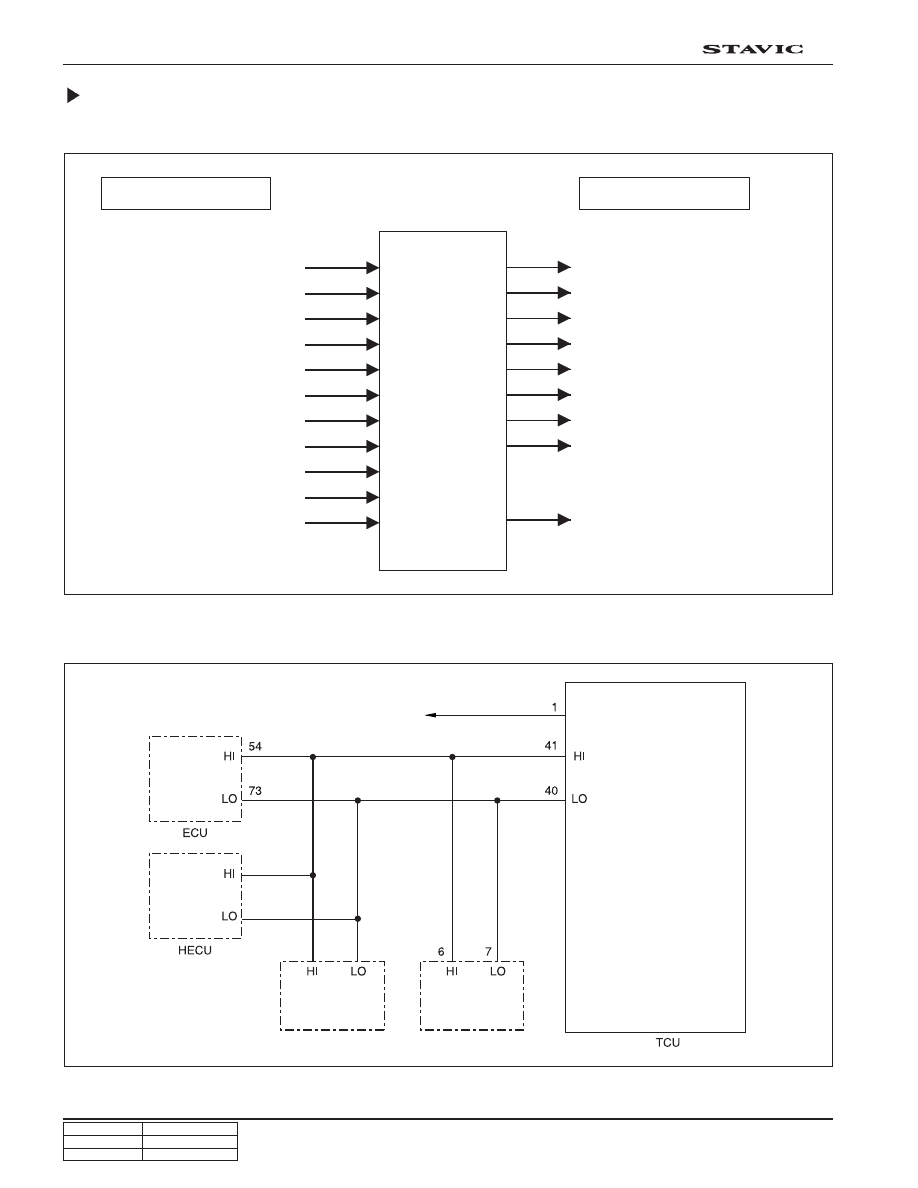SsangYong Stavic / SsangYong Rodius (2005 year). Manual - part 307

CHANGED BY
EFFECTIVE DATE
AFFECTED VIN
42
DC 5-SPEED AUTOMATIC TRANSMISSION
STAVIC - 2004.09
4A
Self diagnostic 11
Selector lever unit
Instrument panel
CAN (Controller Area Network )
Function
Circuit diagram
CAN input signal
CAN output signal
TCU
Accelerator pedal position
Wheel speed (all wheels)
Engine rpm, Engine torque
Coolant temperature
Downshift
Speed control (constant)
Meshed gear
2nd gear start up control
Selected gear in transfer case
Selector lever position
Odometer (I/P)
Selected gear
Shifted status
Lock-up clutch status
Automatic transmission
Kick-down status
Driving conditions
Engine torque control
Dangerous status (changes to
emergency mode when
overloading, dangerous conditions,
and internal fault exists)
ATF Temperature